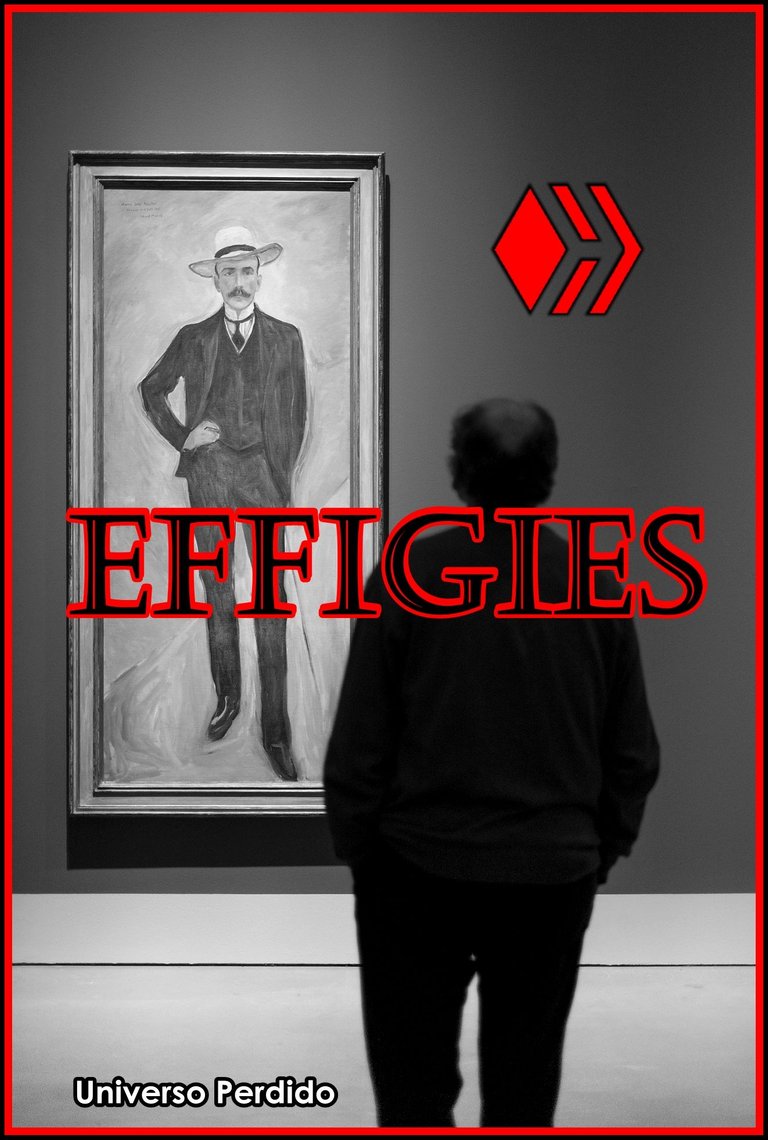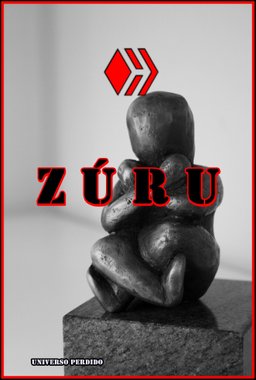
Image by StockSnap from Pixabay
«Dije "je t’aime", en lo de amar sobran los adverbios, ni poco ni mucho, se ama o no se ama.»
«I said "je t'aime", when it comes to love, adverbs are superfluous, neither too little nor too much, you either love or you don't love.»
— Rafael Chirbes

E S P A Ñ O L
𝔼𝔽𝔽𝕀𝔾𝕀𝔼𝕊
Eloísa cada vez empeoraba, no dejaba de hablar del retrato en la pared. Sus gritos se escuchaban hasta con los vecinos, nuestra situación era una historia que contar. Yo la sujetaba entre mis brazos, aunque había momentos de dolor y angustia en que olvidaba que una vez fue mi esposa. Ella berreaba, chillaba, aullaba, gruñía; era espantoso ver como sus ojos se tornaban rojos queriendo salir de sus órbitas; hasta que, como en un chasquido de dedos, se calmaba, se tornaba apacible y serena con los ojos abiertos, incluso se oía que roncaba.
Compré ese retrato semanas atrás porque Eloísa me lo pidió, porque según ella, le recordaba mucho a su familia; una familia que siempre ha querido olvidar, puesto que representaban a su pasado tormentoso. Pero Eloísa había cruzado un umbral de paz, y después de cazarnos, se había convertido en una persona diferente. Yo la conocí en el peor momento de su vida, estaba agotada, deprimida, veía a la muerte posada en su ventana hasta que yo la salvé. La saqué de ese sitio de ruinoso, la sané y la convertí en mi esposa.
Eloísa no me contaba sobre su familia, solo me daba retazos, y cada uno más escabroso que el anterior. En las sesiones de terapias no se conseguía mucho, pues solo hablaba de su madre como una gran artista y de su padre, quien tenía una profesión bastante peculiar, que era un hombre distante y efímero como un fantasma.
El no hablar del pasado de Eloísa significa paz y tranquilidad, la veo más segura, hermosa, sonriente y radiante como un sol que deambula por mi casa, sin embargo, aunque detestaba ese terreno de su vida, quiso comprar ese retrato, una pintura que quizás, le hizo recordar a su madre. Nunca lo entendí, pero varias ideas se me vinieron a la cabeza. Lo primero que pensé fue que Eloísa había aceptado finalmente su pasado, y que ahora lo asimilaba como parte de su vida. Otra idea fue que ella encontró la paz en el perdón, volviéndose invulnerable a cualquier trozo que volviera del ayer para lastimarla. Todas mis ideas eran equívocas, pues Eloísa no lo hizo por ninguna razón que yo hubiera pensado, pero ahora hoy en día, lo sé.
La pintura que compré retrataba a un hombre muy elegante vestido de negro y sombrero. Tenía una expresión muy severa que compaginaba con lo guapo de su rostro. Tenía una mano metida en uno de los bolsillos de su saco y en la otra sostenía un pequeño reloj dorado que marcaba las doce. Eloísa no dejaba de repetir con serenidad que aquel hombre en el cuadro le recordaba mucho a su padre. Los días pasaban y se volvían cada vez más perturbadores, llegaba a casa y solo encontraba a Eloísa observando el cuadro horrorizada, con los ojos abiertos hasta el límite y corriendo lágrimas por sus mejillas. Otras veces la encontraba escondida o gritando tirando objetos por todo el lugar. Tomaba las prendas y sábanas que hallaba y las desgarraba todas con la fuerza de sus brazos, ¡era una completa locura!
Hoy en día, las cosas se volvieron aún peores. Eloísa no dejaba de gritar, se retorcía, agitaba los brazos y las piernas y ya no hallaba como detenerla. Un amigo, al cual le pedí que me acompañara esta noche, me ayudó a detenerla para llevarla a una clínica. Sentía que mi corazón pesaba, no podía soportar tanta conmoción. De repente, en un intento sobrehumano, Eloísa se levantó y me miró directo a los ojos diciéndome: «¡Mira el reloj de la pintura! ¡Mira lo que hay detrás del lienzo!», y tan fugaz como una palmada, se calmó.
Le dije a mi amigo que me diera un momento, antes de llevar a mi esposa a una clínica. Fui directo hacia el retrato, miré al reloj sostenido por el sujeto en la pintura y, lo que vi, me dejó con los ojos abiertos. El reloj ya no marcaba las doce sino las tres, ¿cómo es eso posible? Mi memoria no es tan vaga como para no recordar, aparte de que es imposible de que Eloísa la haya modificado, pues aún la pintura estaría fresca. Despojo al retrato de su marco y miro detrás del lienzo, y lo que vi, me dejó aún más sorprendido. Estaba escrito el nombre de una mujer con grafito de carbón; era el nombre de la madre de Eloísa.
FIN
E N G L I S H
𝔼𝔽𝔽𝕀𝔾𝕀𝔼𝕊
Eloísa was getting worse and worse, she kept talking about the picture on the wall. Her cries were heard even by the neighbors, our situation was a story to tell. I held her in my arms, although there were moments of pain and anguish when I forgot that she was once my wife. She would bawl, shriek, howl, growl; it was frightening to see her eyes turn red, wanting to pop out of their sockets; until, as if in a snap of the fingers, she would calm down, become peaceful and serene with her eyes open, you could even hear her snoring.
I bought that portrait weeks ago because Eloísa asked me for it, because according to her, it reminded her very much of her family; a family she has always wanted to forget, since they represented her stormy past. But Eloísa had crossed a threshold of peace, and after hunting us, she had become a different person. I met her at the worst moment of her life, she was exhausted, depressed, she saw death perched at her window until I saved her. I took her out of that ruinous place, healed her and made her my wife.
Eloísa would not tell me about her family, she would only give me snippets, each one more lurid than the last. In the therapy sessions not much was achieved, because she only talked about her mother as a great artist and her father, who had a rather peculiar profession, who was a distant and ephemeral man like a ghost.
Not talking about Eloísa's past means peace and tranquility, I see her more confident, beautiful, smiling and radiant as a sun that wanders through my house, however, although she detested that area of her life, she wanted to buy that portrait, a painting that perhaps, reminded her of her mother. I never understood it, but several ideas came to my mind. My first thought was that Eloísa had finally accepted her past, and was now assimilating it as part of her life. Another idea was that she found peace in forgiveness, becoming invulnerable to any piece that came back from yesterday to hurt her. All my ideas were equivocal, for Eloise did not do it for any reason I would have thought, but now today, I know.
The painting I bought portrayed a very elegant man dressed in black and hat. He had a very stern expression that matched the handsomeness of his face. He had one hand tucked into one of his coat pockets and in the other he was holding a small golden watch that read twelve o'clock. Eloísa kept repeating serenely that the man in the painting reminded her very much of her father. The days went by and became more and more disturbing, I would arrive home and only find Eloísa staring at the painting in horror, her eyes wide open to the limit and tears running down her cheeks. Other times I would find her hiding or screaming, throwing objects all over the place. She would grab whatever clothes and sheets she could find and tear them all apart with the strength of her arms, it was complete madness!
Today, things got even worse. Eloísa would not stop screaming, writhing, flailing her arms and legs and I could no longer find a way to stop her. A friend, whom I asked to accompany me tonight, helped me to stop her to take her to a clinic. I felt my heart was heavy, I could not bear so much commotion. Suddenly, in a superhuman attempt, Eloísa stood up and looked me straight in the eye saying, "Look at the clock on the painting! Look what's behind the canvas!" and as fleeting as a pat, she calmed down.
I told my friend to give me a moment, before I took my wife to a clinic. I went straight to the portrait, looked at the clock held by the subject in the painting and, what I saw, left me wide-eyed. The clock no longer read twelve o'clock but three o'clock, how is that possible? My memory is not so vague as not to remember, apart from the fact that it is impossible for Eloise to have modified it, since the painting would still be fresh. I remove the portrait from its frame and look behind the canvas, and what I saw left me even more surprised. A woman's name was written in charcoal graphite; it was the name of Eloísa's mother.
THE END

Escrito por @universoperdido. 27 de Junio del 2021
Written by @universoperdido. June 27, 2021.

Relatos anteriores | Previous stories


¿Eres escritor? ¿No encuentras un lugar adecuado para colocar tus trabajos literarios? Unete a Literatos, una comunidad en Hive donde puedes publicar tus cuentos, poemas, ensayos literarios y novelas inéditos de tu propia autoría.




Congratulations @universoperdido! You have completed the following achievement on the Hive blockchain and have been rewarded with new badge(s) :
You can view your badges on your board and compare yourself to others in the Ranking
If you no longer want to receive notifications, reply to this comment with the word
STOPTo support your work, I also upvoted your post!